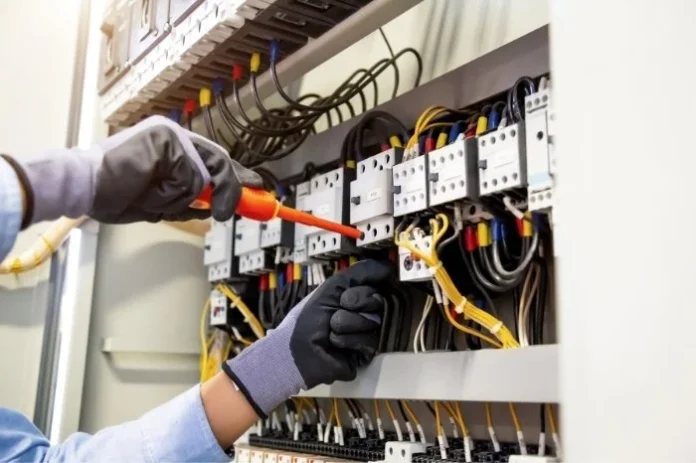The electrical contracting industry has always walked the line between precision and unpredictability. No matter how carefully a job is scoped, unexpected variables from old wiring hidden behind walls to mid-project change requests can throw timelines and budgets off track. In recent years though, a quiet revolution has been unfolding.
Contractors are finding ways to combine old-school trade expertise with modern pricing models and technology, creating an environment where work is more predictable, more profitable, and often more satisfying for both crews and clients.
Why Pricing Transparency Matters More Than Ever
For decades, contractors relied heavily on hourly billing or loose estimates based on past jobs. While those methods can still work in certain scenarios, they often leave both sides uneasy. Clients worry about open-ended costs, while contractors risk undervaluing their labor and materials. That’s where the electrical flat rate price book is changing the game.
This tool allows contractors to set standardized, transparent pricing for a wide range of tasks, from installing an outlet to rewiring a kitchen. Not only does this give customers immediate clarity, it also eliminates the awkward dance of negotiating every small change or addition. Contractors can quote confidently, knowing their margins are protected, while customers appreciate the predictability.
The key, however, is keeping that price book accurate and up to date — material costs fluctuate, codes evolve, and job complexities vary from region to region. Successful firms treat their pricing models as living documents, adjusting them as market conditions shift.
There’s also a trust factor. In an industry where reputation is often built on word-of-mouth referrals, having a clear, standardized pricing structure positions a contractor as professional and organized. It sends the message that this is not a one-off operation but a business with systems that protect both sides of the deal.
Technology That Puts Everyone on the Same Page
Even the most accurate pricing won’t save a project if communication breaks down. This is where digital tools are proving indispensable. From client-facing portals that show project timelines to mobile apps that allow electricians to update job progress in real time, the ability to keep every stakeholder in the loop is becoming a competitive advantage.
One of the biggest changes is the integration of scheduling and billing platforms with field operations. In the past, an electrician might complete a job, jot notes on paper, and pass them to the office for invoicing. Now, those updates can be logged instantly on-site, triggering an invoice or scheduling the next phase without delay. It means fewer bottlenecks, less paperwork, and faster payment cycles.
For crews in the field, mobile access to schematics, permits, and safety checklists reduces downtime and eliminates guesswork. Customers notice the difference when problems are resolved quickly, and projects stay on schedule. The speed of information sharing not only boosts productivity but also leaves room for more accurate forecasting, a benefit that ripples into everything from inventory ordering to staffing decisions.
Bridging Tradition with Modern Efficiency
Some veteran contractors bristle at the idea of relying too heavily on apps or standardized pricing, worried that it might reduce the craft to a checklist. But the reality is that these tools don’t replace skill — they free up time for it. By eliminating repetitive administrative tasks, technology gives electricians more hours to focus on the actual work.
This hybrid approach also appeals to the next generation entering the trade. Younger electricians often expect tech to be part of their workday, whether it’s pulling up plans on a tablet or logging hours through a mobile system. Companies that blend traditional know-how with modern efficiency tools are better positioned to recruit and retain talent.
The trick is implementation. Rolling out new systems too quickly, without adequate training, can create frustration. The most successful contractors introduce tools in phases, ensuring everyone from the master electrician to the newest apprentice understands not just how to use them, but why they matter.
When Apps Become the Toolbox Extension
Not all tools are physical anymore. Many contractors now treat their electrical contractor apps like an extension of their tool belts. These apps aren’t just for scheduling or invoicing — some offer advanced features like load calculation, code reference libraries, or augmented reality overlays for mapping wiring behind walls.
In residential work, apps that can quickly generate estimates on-site give contractors a clear edge. A homeowner considering a panel upgrade doesn’t want to wait days for a formal proposal. Being able to produce a detailed, accurate estimate during the first visit increases the likelihood of securing the job.
On the commercial side, integration with building management systems is becoming more common. Contractors who can connect their work to a client’s existing smart infrastructure — for example, syncing new lighting installations with automated energy monitoring — are finding themselves in high demand. The value isn’t just in doing the work, but in delivering it in a way that meshes with the client’s broader operational goals.
Specialized Projects That Demand a Different Approach
While general service work keeps many contractors busy, specialized projects are often where the most profitable opportunities lie. Take basement renovations as an example. These jobs can range from straightforward rewiring to complex installations involving home theaters, gyms, or secondary living spaces. Each has unique electrical needs, from dedicated circuits to advanced lighting design.
A contractor with standardized pricing for common basement-related tasks can move quickly in this market, while still allowing for customized quotes when a project demands something unique. The key is balancing the efficiency of standardized systems with the flexibility to adapt when the unexpected arises.
These specialized projects also highlight the advantage of integrated tech. Apps that allow on-site load calculations or instant code checks can prevent costly mistakes, while digital project tracking reassures homeowners that progress is on pace. The more seamless the process feels to the client, the more likely they are to recommend the contractor for other high-value projects.
Data as a Competitive Advantage
Behind all the efficiency gains and smoother client experiences is one factor that often goes underappreciated: data. Every job, every quote, every invoice adds to a growing pool of information that can be analyzed to improve operations.
Contractors who track metrics like average job duration, profit margin by project type, or customer acquisition cost can make more informed business decisions. They can spot patterns — maybe certain types of jobs consistently run over budget, or a particular crew finishes faster without sacrificing quality. Those insights allow for strategic adjustments that keep the business moving forward.
Even marketing benefits from this data. If numbers show that panel upgrades generate higher margins and repeat customers, contractors can allocate more advertising toward that service. In an industry where word-of-mouth has traditionally been the primary driver of new business, pairing that with targeted marketing creates a one-two punch for growth.
Where the Industry Is Headed
The combination of transparent pricing, integrated tech, and data-driven decision-making isn’t just a passing trend. It’s becoming the baseline expectation for many clients. Homeowners are accustomed to real-time updates from food delivery to flight tracking, and they’re starting to expect the same level of communication for home projects. Commercial clients, meanwhile, are looking for partners who can deliver not just technical skill, but operational alignment.
The companies that thrive will be those that keep refining their processes while staying grounded in the trade’s fundamentals. Technology and pricing models will keep evolving, but the core remains the same: doing the job right, on time, and with integrity.
Closing Circuit
Electrical contracting is moving toward a future where precision in pricing and efficiency in execution go hand in hand. Contractors who embrace these changes aren’t abandoning tradition — they’re enhancing it with tools that keep projects moving, customers informed, and margins healthy. The ones who adapt thoughtfully will find themselves not just keeping up, but leading the charge.





